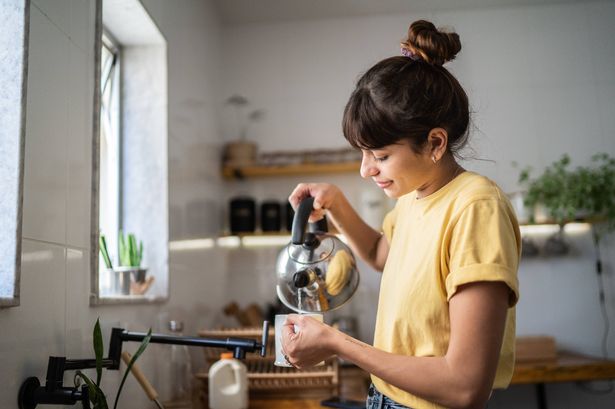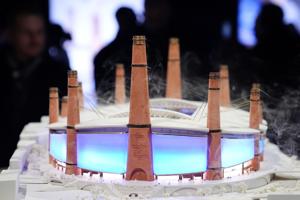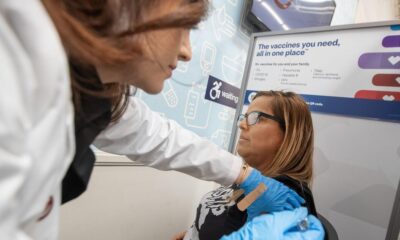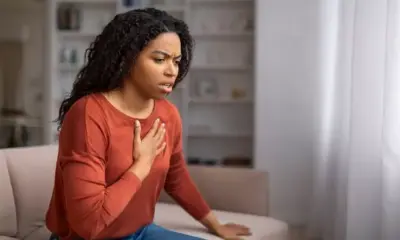Health
Quick Breast Self-Exams Can Save Lives: Expert Advice Shared

Breast cancer remains a significant health concern globally, with a diagnosis occurring every ten minutes in the United Kingdom. Despite advancements in awareness, recent studies show a decline in the number of women conducting regular breast self-examinations, dropping from 49% in 2022 to 45% in 2024. According to Cancer Research UK, approximately 56,500 women and 390 men are diagnosed with breast cancer each year in the UK alone.
Dr. Cihan Uras, a breast cancer surgeon with over 35 years of experience at Acıbadem Hospitals, emphasizes the importance of regular self-examinations, particularly during Breast Cancer Awareness Month in October. He notes that a simple self-check can take less time than making a cup of tea and could significantly impact early detection rates.
Understanding the Self-Examination Process
Dr. Uras encourages individuals to familiarize themselves with their bodies and promptly notice any changes. He states, “Breast cancer is the most common cancer among women worldwide, but when it’s detected early, survival rates are very high.” A self-examination, which should be performed monthly, can be completed in just three minutes.
Dr. Uras outlines a straightforward three-step process for a thorough self-examination:
1. **Take a Look in the Mirror (1 minute)**: Begin by standing topless in front of a mirror. With your shoulders straight and hands on your hips, look for any noticeable changes in the breasts. Dr. Uras advises, “As you do this more often, these differences will be easier to spot.” Signs to look for include dimpling of the skin, redness, rashes, or changes to the nipple, such as inversion or discharge.
2. **Lift Your Arms (30 seconds)**: Raise your arms above your head and observe any differences in contour or swelling. “Lifting your arms stretches the breast tissue and skin, making subtle changes more visible,” explains Dr. Uras. This step can help reveal puckering or pulling of the skin, which may not be apparent when the arms are down.
3. **Feel While Standing and Lying Down (90 seconds)**: The final stage should be conducted while lying down. Use the flat of your fingertips to feel in circular motions around the entire breast area, including under the armpit. Dr. Uras advises applying varying pressure—light, medium, and firm—to ensure all layers of breast tissue are examined. Watch for thickened areas, tenderness, or lumps during this process.
What to Do If You Find Something
Dr. Uras reassures that not all findings during self-examinations indicate cancer. He states, “If you do find a lump, always have it checked as soon as possible by a medical professional.” Regular monthly checks increase the likelihood of early detection, allowing for prompt treatment if necessary.
He recommends conducting self-exams a few days after menstruation ends, as this is when breasts are less likely to be tender. For those who no longer menstruate, selecting a consistent time each month can help establish a reliable routine.
For more information, the NHS offers comprehensive resources for individuals facing breast cancer, including support for families. The emphasis on self-examination is crucial in the fight against breast cancer, as early detection remains a key factor in improving survival rates.
-

 Technology5 months ago
Technology5 months agoDiscover the Top 10 Calorie Counting Apps of 2025
-

 Health3 months ago
Health3 months agoBella Hadid Shares Health Update After Treatment for Lyme Disease
-

 Health3 months ago
Health3 months agoErin Bates Shares Recovery Update Following Sepsis Complications
-

 Technology4 months ago
Technology4 months agoDiscover How to Reverse Image Search Using ChatGPT Effortlessly
-

 Technology1 month ago
Technology1 month agoDiscover 2025’s Top GPUs for Exceptional 4K Gaming Performance
-

 Technology3 months ago
Technology3 months agoElectric Moto Influencer Surronster Arrested in Tijuana
-

 Technology5 months ago
Technology5 months agoMeta Initiates $60B AI Data Center Expansion, Starting in Ohio
-

 Technology5 months ago
Technology5 months agoRecovering a Suspended TikTok Account: A Step-by-Step Guide
-

 Health4 months ago
Health4 months agoTested: Rab Firewall Mountain Jacket Survives Harsh Conditions
-

 Lifestyle5 months ago
Lifestyle5 months agoBelton Family Reunites After Daughter Survives Hill Country Floods
-

 Health3 months ago
Health3 months agoAnalysts Project Stronger Growth for Apple’s iPhone 17 Lineup
-

 Technology4 months ago
Technology4 months agoHarmonic Launches AI Chatbot App to Transform Mathematical Reasoning





















